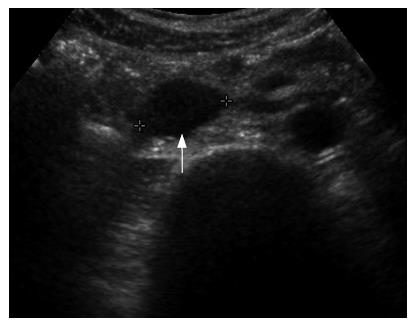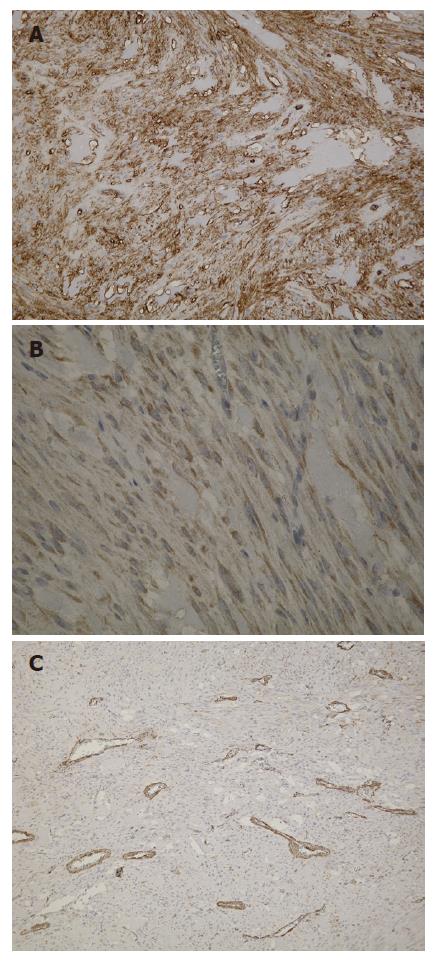Copyright
©2007 Baishideng Publishing Group Co.
World J Gastroenterol. Jun 28, 2007; 13(24): 3396-3399
Published online Jun 28, 2007. doi: 10.3748/wjg.v13.i24.3396
Published online Jun 28, 2007. doi: 10.3748/wjg.v13.i24.3396
Figure 1 Duodenal endoscopy neither showed an intraluminal mass nor a mucosal abnormality under good visualization to the fourth part of the duodenum.
Figure 2 Abdominal ultrasound showed 2.
3 cm sized, oval-shaped hypoechoic solid nodule around the uncinate process of the pancreas (arrow).
Figure 3 The CT scan of upper abdomen showed an intense homogenously enhancing tumor with 2.
3 cm in diameter in the pancreatic head region (arrow).
Figure 4 Macroscopic appearance of the resected specimens; a round yellow gray colored tumor of cut surface (arrows) indicated the submucosal mass growing outwards towards the duodenal lumen.
Figure 5 A well-defined subserosal duodenal GIST showing interlacing fascicles of the spindle cells with elongated cytoplasm (H&E stain; A: × 20, B: × 200).
Figure 6 The tumor cells react positively for CD34 (A: × 200) and c-kit (B: × 200) while negative for SMA (C: × 100) on immunohistochemistry.
- Citation: Kwon SH, Cha HJ, Jung SW, Kim BC, Park JS, Jeong ID, Lee JH, Nah YW, Bang SJ, Shin JW, Park NH, Kim DH. A gastrointestinal stromal tumor of the duodenum masquerading as a pancreatic head tumor. World J Gastroenterol 2007; 13(24): 3396-3399
- URL: https://www.wjgnet.com/1007-9327/full/v13/i24/3396.htm
- DOI: https://dx.doi.org/10.3748/wjg.v13.i24.3396


















